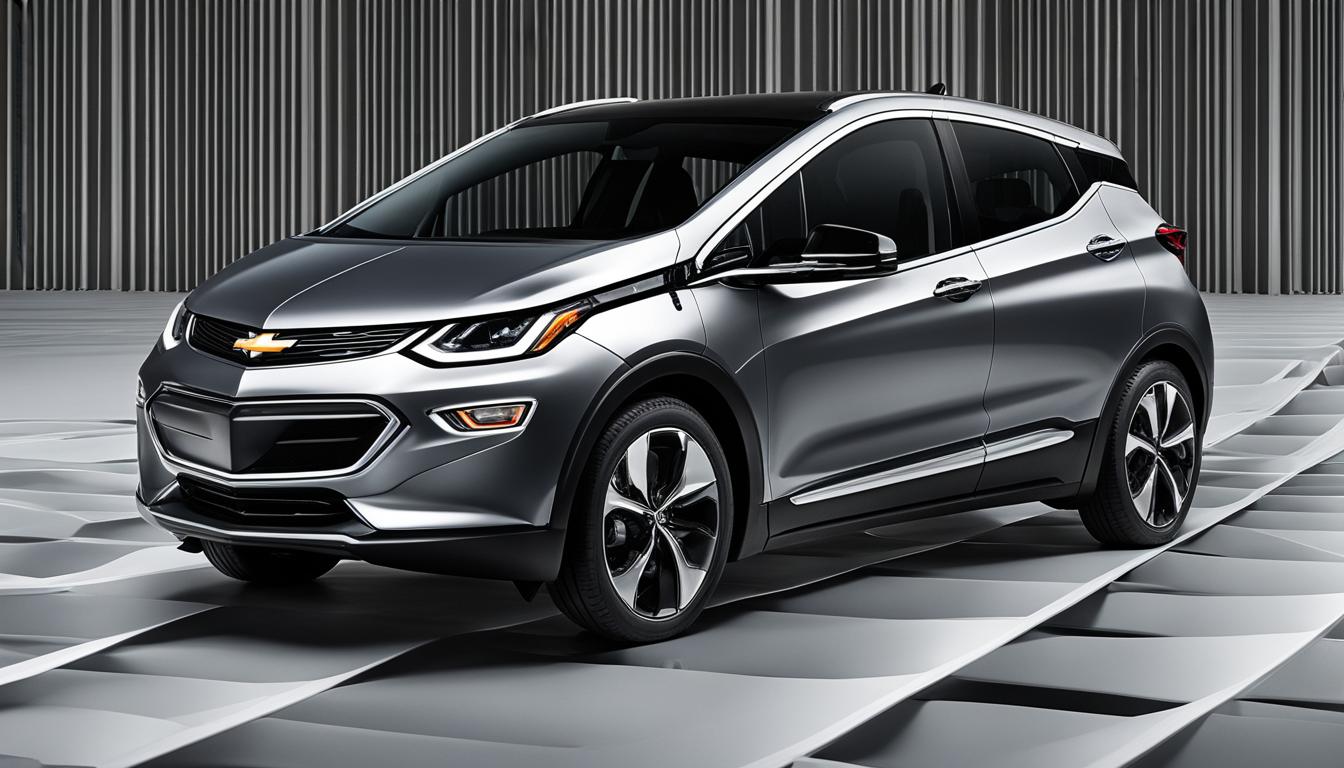The electric vehicle (EV) market is buzzing with innovation and allure, but one crucial aspect often left uncharged in the initial excitement is the understanding of Chevy Bolt EUV depreciation. As many Chevy Bolt EUV owners have discovered, their prized EVs are not immune to the swift currents of depreciation, seeing a notable dip in value in a short period.
With the Chevy Bolt EUV, for instance, owners may find themselves navigating a steep depreciation curve, which can lead to a 25% drop in worth just six months post-purchase. While the allure of electric driving offers a host of advantages, from eco-friendliness to fuel savings, grappling with the Chevy Bolt EUV value depreciation is now part and parcel of the ownership experience.
Despite the challenge, many Bolt EUV enthusiasts embrace depreciation as a reality of EV ownership, focusing instead on the joy of driving and the promise of more advanced, future EV models. This mindset is crucial for those who see beyond monetary value, upholding the belief that certain benefits of driving a Chevy Bolt EUV cannot be quantified.
With the rise of EVs, understanding the ties that bind investment to enjoyment becomes essential, proving the importance of cast iron insight into the understanding Chevy Bolt EUV depreciation as a pivotal factor in the electric journey on the road ahead.
Key Takeaways
- Chevy Bolt EUV faces a rapid depreciation, losing about 25% of value within the first six months.
- Understanding the nuances of Chevy Bolt EUV depreciation is vital for current and prospective owners.
- The higher initial cost of EVs like the Chevy Bolt EUV may contribute to steeper depreciation rates.
- Despite depreciation, many owners prioritize the benefits of electric driving over resale value.
- Future advancements in EV technology may influence current attitudes towards depreciation.
- Keeping up with market trends and incentives is important for mitigating depreciation impact.
Chevy Bolt EUV Depreciation: A Comprehensive Overview
When it comes to electric vehicle ownership, the sharp depreciation of the Chevy Bolt EUV cuts through the eco-friendly excitement like a bolt of lightning. An essential factor affecting Chevy Bolt EUV depreciation is its higher starting cost compared to conventional internal combustion engine (ICE) vehicles.
As a new market entrant with advanced technology, the Bolt EUV starts at a premium, leaving more room for its value to fall. Marketplace observations confirm that electric vehicles like the Chevy Bolt EUV depreciate nearly twice as quickly as their ICE counterparts, triggering important financial considerations for potential and current owners.

For owners who prioritize technology over tenor, the depreciation may be less concerning, seeing it as an opportunity to regularly upgrade to the latest EV innovations.
However, for those looking at the Chevy Bolt EUV through a financial lens, the Chevy Bolt EUV depreciation analysis offers a sobering view. With record values being wiped out in the blink of an eye, thoughtfully gauging when to enter or exit the EV market becomes paramount.
Consider the Chevy Bolt EUV owners who reported purchasing their EVs – including high-end models, like the Blazer EV at $61k or an Equinox EV for $52k – only to witness a drastic decrease in their vehicle’s worth shortly thereafter. Here’s a clear look at what this depreciation could mean for owners:
| Model | Initial Purchase Price | Estimated Value Post 6-Months | Depreciation Percentage |
|---|---|---|---|
| Chevy Bolt EUV | $33,000 | $26,000 | ~25% |
| Blazer EV | $61,000 | $41,000 – $51,000 | $20k – $30k Depreciation |
| Equinox EV | $52,000 | $32,000 – $42,000 | $20k – $30k Depreciation |
Given these figures, it’s clear why understanding the intricacies of factors affecting Chevy Bolt EUV depreciation is essential. It’s not only about the vehicle’s immediate loss of value but also about the long-term financial strategy for navigating EV ownership.
Current data suggests remaining informed on Chevy Bolt EUV depreciation trends is not just advisable – it’s a critical component of responsible EV vehicular investment.
- Awareness of rapid depreciation is crucial for potential EV owners.
- Comparative data highlights the urgency in understanding EV market dynamics.
- Long-term ownership can offset some effects of depreciation.
In a nutshell, behind the wheel of a Chevy Bolt EUV lies an electrifying blend of innovation, performance, and environmental consciousness, shadowed by the reality of financial depreciation. Whether these factors power up a potential buyer’s interest or put the brakes on it, the long-term value trajectory of the Chevy Bolt EUV remains a critical gauge in the EV market landscape.
How the Chevy Bolt EUV Compares to ICE Vehicle Depreciation
Diving into the world of electric vehicle economics, the Chevy Bolt EUV offers a live case study on the unique depreciation trends associated with EV ownership. Navigating through the fiscal facets of EV stewardship, one is bound to strike comparisons with traditional gas vehicles—the contrast only sharpening the focus on the Chevy Bolt EUV depreciation rate.
Examining these depreciation dynamics not only equips owners with a foresight into their vehicle’s financial journey but also shapes the expectations of prospective buyers considering a switch from ICE to electric.
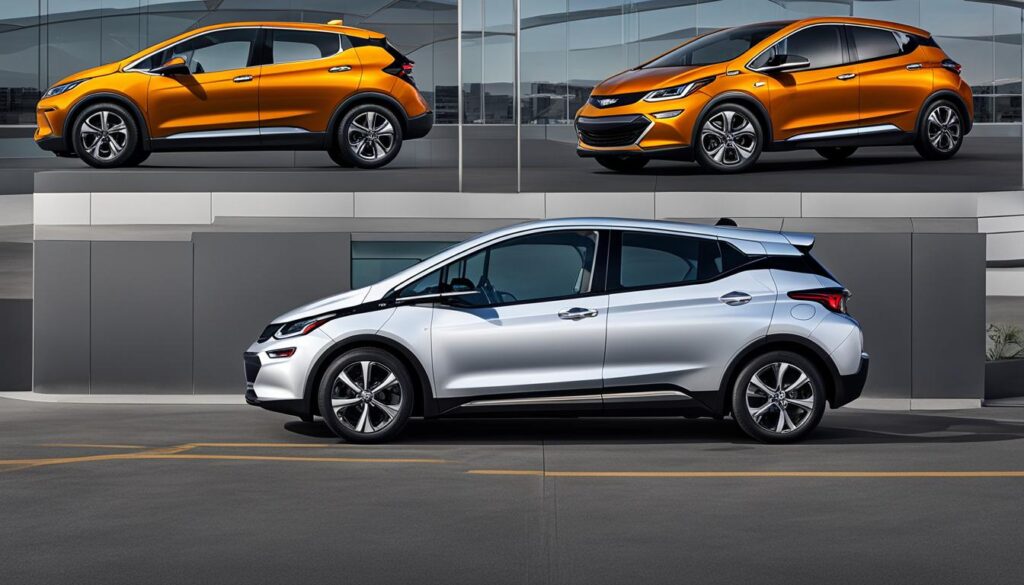
The Surprising Speed of EV Depreciation
The swift descent in EV value, a pressing concern for the financially savvy motorist, highlights the chevy bolt euv depreciation trends as an important facet to prospective and current owners.
Yielding surprising statistics, a brand-new 2023 Chevy Bolt EUV, for instance, can witness its worth wane by approximately $7,000 within a mere six-month period—an eye-opener for those who measure a car’s merit on its monetary retention.
Cost Analysis: Chevy Bolt EUV vs. Traditional Gas Vehicles
When placed side by side with our combustion-engined companions, the Chevy Bolt EUV exhibits a depreciation rate that’s as accelerated as its zero-to-sixty sprint. One owner’s tale recounts the dip in a Chevy Bolt EUV’s value from a purchase price of $33,000 to an offer of $26,000 from a notable EV purchasing platform just half a year later—a significant 25% depreciation leap. Conversely, the gas-powered vehicle scenario paints a steadier slope of decline, like a Mustang Mach-E sustaining a less severe drop over two years.
| Vehicle | Time Frame | Initial Value | Value After Time Frame | Depreciation Rate |
|---|---|---|---|---|
| Chevy Bolt EUV (2023) | 6 Months | $33,000 | $26,000 | Approx. 21% |
| Mustang Mach-E | 2 Years | $49,500 | $30,000 | Approx. 39% over 2 Years |
This comparative analysis serves as an amplifyer, resonating with the importance of understanding the Chevy Bolt EUV depreciation rate in relation to its fossil-fueled counterparts. It lays down the groundwork for potential EV adopters to fathom the financial panorama of their vehicular candidates, making depreciation a paramount parameter in the full cost spectrum of eco-conscious conveyance.
The Real Cost of Owning a Chevy Bolt EUV
Stepping into the future of transportation with a Chevy Bolt EUV comes with its electrifying perks, but it’s the calculation of long-term expenses that completes the picture of ownership. Beyond the shimmering allure of innovation, the financial aspects of insurance premiums, loan interest, and the significant factor of Chevy Bolt EUV value depreciation must be considered to truly understand the vehicle’s fiscal journey over time.
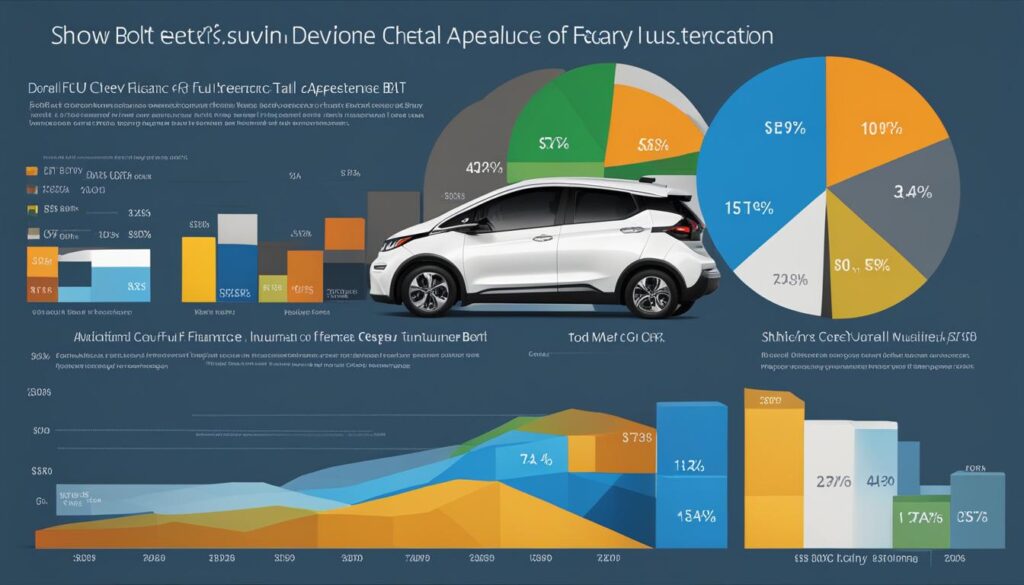
Breaking Down the Total Cost of Ownership
Ownership costs extend beyond the sticker price. For the Chevy Bolt EUV, a broader financial outlook reveals the layers of expenses that accumulate over the years. Depreciation, the largest of these costs, gnaws the vehicle’s value significantly, with an average plunge of around $9,335 within a five-year span. This depreciation of Chevy Bolt EUV requires a keen eye to manage and mitigate as much as possible.
How Insurance Premiums Affect Long-Term Costs
Insurance, the silent navigator of your automotive finance journey, tallies an average annual cost upwards of $2,175 for the Chevy Bolt EUV. This mandatory companion can account for an approximate total of $10,875 over the course of five years, reinforcing the importance of shopping for competitive rates to keep this slice of the ownership pie as lean as possible.
Impact of Loan Interest on Chevy Bolt EUV’s Cost Over Time
While financing a Chevy Bolt EUV ignites the path of electric-powered transit, the flame of loan interest often goes unseen, adding around $3,984 to the total cost over five years. Interest rates, dynamic as they are, can create a significant variance in overall expenses, encouraging owners to seek favorable loan terms to keep their financial mobility agile.
| Cost Factor | Average Amount | Timeframe |
|---|---|---|
| Depreciation | $9,335 | 5 Years |
| Insurance Premiums | $10,875 | 5 Years |
| Loan Interest | $3,984 | 5 Years |
The true essence of owning a Chevy Bolt EUV is found in balancing the eco-conscious choices of today with the economical strategies of tomorrow. By understanding the complexities of insurance, interest, and the depreciation of Chevy Bolt EUV, owners can navigate the financial roads ahead with confidence and clarity.
Understanding Depreciation: The Chevy Bolt EUV’s Value Over Time
Fathoming the financial journey of electric vehicles (EVs), including the Chevy Bolt EUV, entails grasping the mechanics behind depreciation. Owners stepping into the stream of EV ownership must be ready for the initial plunge in value that electric models often experience. This depreciation can be more pronounced within the first year of ownership and is a critical element affecting the resale and trade-in value of the vehicle.
The First-Year Depreciation Hit Experienced by Bolt EUV Owners
For many who slip into the driver’s seat of a brand-new EV like the Chevy Bolt EUV, the depreciation hit within the first 12 months can be startling. This decline is not unique to the Bolt but rather an industry-wide phenomenon for new cars where a significant portion of value dissipates almost as quickly as it accelerates off the lot. Understanding Chevy Bolt EUV depreciation, particularly during this initial phase, is crucial for current and potential owners to make informed economic decisions.
Why Chevrolet Bolt EUV Models Lose Value and How to Calculate It
The Chevy Bolt EUV depreciation analysis is multi-faceted. Intrinsic factors such as the vehicle’s original sticker price combined with market dynamics, including supply and demand fluctuations, greatly influence the rate of depreciation. Some market peculiarities, such as a sudden price reduction in new models, can intensify the perception of depreciation, leaving recent buyers at a loss.
To better understand Chevy Bolt EUV depreciation, consider the vehicle’s initial sales price and its expected average residual value after five years. These parameters form the basis of a depreciation calculation. The table below exemplifies the approximate value depreciation of a Chevy Bolt EUV over its first year:
| Time of Valuation | Initial Purchase Price | Value at Time of Valuation | Depreciation |
|---|---|---|---|
| At Purchase | $33,000 | $33,000 | 0% |
| 6 Months | $33,000 | $26,000 | ~21% |
| 1 Year | $33,000 | $24,683* | Estimated 25% |
*Note: This valuation is based on average depreciation rates and industry data; actual values may vary by individual vehicle condition, market trends, and other factors.
An awareness of Chevy Bolt EUV depreciation trends helps set proper expectations and planning for resale or trade-in down the road, ensuring owners are not blindsided by market realities. Keeping abreast of these trends is part and parcel of the EV ownership experience.
Comparative Depreciation Analysis of Chevy Bolt EUV
As electric vehicles (EVs) continue to carve out their niche in the automotive world, the Chevy Bolt EUV emerges as a focal point for studying depreciation trends. A comparative analysis of different EV models illustrates the varying degrees of depreciation, revealing how market forces impact their value. Owners and buyers must pay attention to these trends to make informed, financially prudent decisions.
Depreciation Rates Across Different EV Models
An in-depth look at the Chevy Bolt EUV’s depreciation trends reveals that its slide in value might appear steep when compared to certain other EVs. For example, consider the case of a Bolt EV with an initial purchase price of CAD 43,000, depreciating down to CAD 26,000 over five years. This represents a significant value loss that Chevy Bolt EUV owners are wary of. Market nuances like taxpayer-funded incentives, which are not always accounted for in depreciation calculations, can affect the perceived loss in value.
Market Forces and Their Influence on Chevy Bolt EUV Value
The forces moving the market are as dynamic as the technology propelling the Chevy Bolt EUV. They play a substantial role in determining the vehicle’s depreciation rate. Variables such as demand, advancements in EV technology, financial incentives, and changes in consumer sentiment can all sway the Chevy Bolt EUV’s residual value. Achieving a strong grasp on these forces provides consumers with the insight needed to potentially minimize depreciation and guide their purchasing or selling timeline.
As an essential tip to minimize Chevy Bolt EUV depreciation, maintaining an awareness of market trends can empower owners to make timely decisions that bolster their vehicle’s resale value. Sharing individual stories and experiences helps to build a clearer picture of Chevy Bolt EUV depreciation trends, equipping owners with the knowledge they need to steer through the financial landscape of EV ownership.
Awareness and strategy are key in navigating the EV market’s depreciation curves.
Tips to Minimize Chevy Bolt EUV Depreciation
Depreciation can often be a vehicle owner’s nemesis, diminishing the value of their prized possession over time. For Chevy Bolt EUV owners, understanding how to navigate these depreciation trends is essential. By employing strategic tactics focused on maintenance and optimal selling times, it’s possible to curb the impact of depreciation, ensuring that your electric journey remains both enjoyable and economically viable.
Maximizing Resale Value Through Maintenance and Upkeep
It’s no secret that a well-maintained car holds its value better than one with a spotty service record. For the Chevy Bolt EUV, staying current with routine maintenance checks and addressing any electrical or battery issues directly correlates with its ability to retain maximum resale value. Detailed documentation of service visits and repairs not only reflects a history of care but can also be a persuasive selling point to potential buyers.
Strategies for Selling Your EV at the Right Time
Timing is everything, and in the realm of electric vehicles, the window for selling can be crucial to minimizing depreciation. Monitoring chevy bolt euv depreciation trends provides insight into when demand peaks, often just before new models hit the market or when EV incentives are about to expire. Selling during these high-demand periods can help you get the best possible return on your investment.
Furthermore, with an increase in EV popularity, the introduction of new features, and fluctuating fuel prices, fully understanding and leveraging these market trends is a strategy smart Chevy Bolt EUV owners should not overlook. By staying informed and tactically pinpointing the right time to sell, you plant the seeds for a flourishing financial benefit in the future of EV ownership.
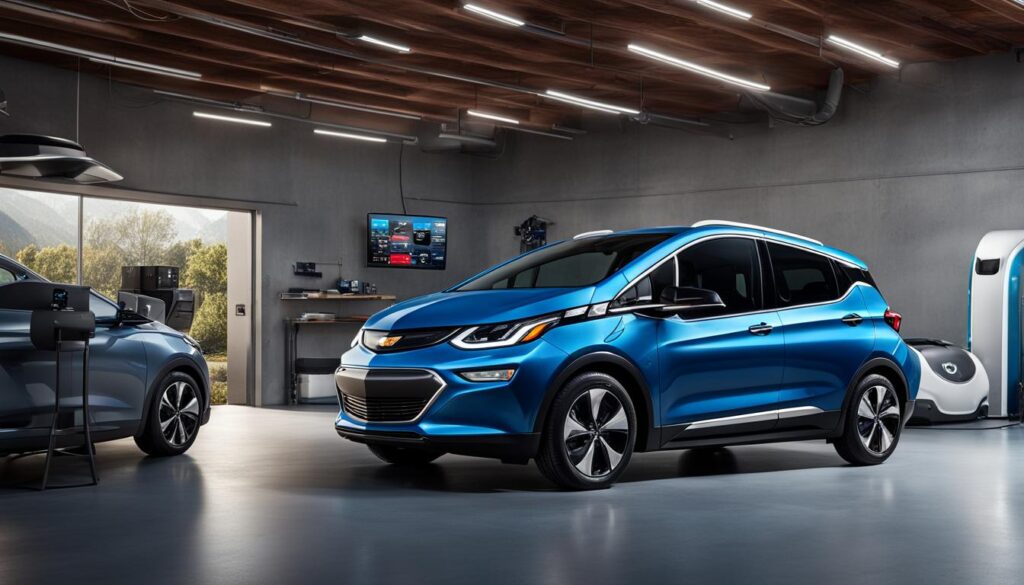
Beyond these strategies, Bolt EUV owners are recommended to consider the following actionable tips:
- Keep the exterior and interior in pristine condition.
- Update any software as recommended by Chevrolet to ensure the latest features and bug fixes.
- Limit modifications to those that could increase appeal to future buyers.
- Stay updated on EV market developments and adjust your selling strategy accordingly.
The economic landscape for electric vehicles like the Chevy Bolt EUV is constantly evolving, with new models, technologies, and market conditions influencing depreciation rates. Armed with these tips to minimize chevy bolt euv depreciation, owners can steer towards a more financially positive outcome over the tenure of their car ownership.
How Tax Credits and Incentives Impact Chevy Bolt EUV Depreciation
The financial trajectory of owning a Chevy Bolt EUV includes various factors, some of which offer a silver lining amidst the cloud of vehicle depreciation. Chief among these are federal and state tax credits and incentives which actively play into the depreciation calculus and can offset some sting of value loss over time.
Understanding Federal and State EV Incentives
The availability of federal and state incentives, like the substantial $7,500 tax credit, serves to mitigate the initial cost of acquisition for new EVs. This, in turn, impacts the Chevy Bolt EUV’s value depreciation by recalibrating the base value from which depreciation is calculated. Eligibility for these financial sweeteners may hinge on several variables, such as the owner’s tax situation and the EV model’s qualification under current law, making a knowledgeable approach toward these incentives essential.
Calculating the True Cost After Tax Benefits
Moving past the sticker shock and understanding the real expense of Chevy Bolt EUV’s ownership means adjusting the figures to account for these tax credits and incentives. For example, a buyer eligible for the full tax credit could effectively lower the Chevy Bolt EUV’s purchase price, thus altering the perspective on factors affecting Chevy Bolt EUV depreciation. This adjusted value should then be positioned against the estimated future resale value to sketch a more accurate portrait of the vehicle’s true cost after benefits and depreciation.
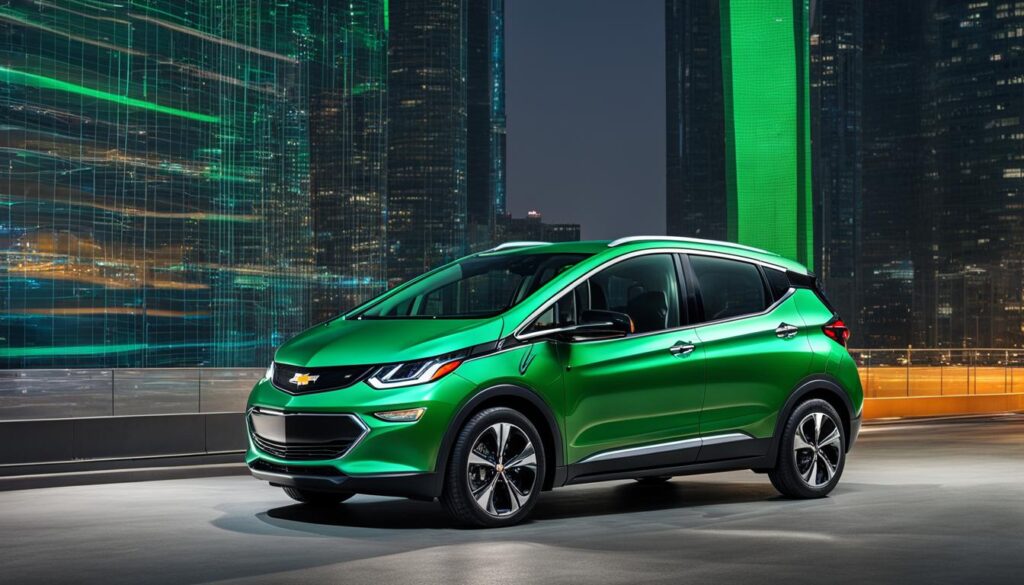
Understanding the depth and breadth of these incentives is a step toward grasping the complicated dance of depreciation. A well-informed buyer or current owner can leverage these subsidies to cushion the impact of depreciation and reconcile the economic aspects of environmentally responsible driving.
Conclusion
As we plug into the current of electric vehicle economics, the Chevy Bolt EUV stands as an exemplar of modern motoring trends—draped in the allure of technological progress but also tethered to the realities of ownership costs.
The Chevy Bolt EUV depreciation rate is a critical factor impacting the total cost of ownership, a current that flows with both market trends and leveraging tax incentives. It’s a sharp reminder that while the future of driving may be electric, the rules of depreciation remain in full circuit.
In our pursuit of understanding Chevy Bolt EUV depreciation, we uncover strategies to navigate these fiscal waters with acumen. Regular vehicle upkeep and timing the market for resale or trade-in can offer owners a financial berth against the depreciation tide.
Tax incentives can act as fiscal life rafts, providing buoyancy to the vehicle’s value. By staying current with the evolving electric landscape—tracking developments and incentive eligibility—owners can harness the tools needed to streamline costs and maintain the vehicle’s worth.
Ultimately, making an informed decision on when to buy, sell, or hold onto a Chevy Bolt EUV requires a map that includes depreciation charts, market predictions, and financial forecasts. Armed with the knowledge of these interconnected elements, drivers can optimize their electric journey to be not just an exhilarating ride, but also an economically smart one.
FAQ
What is the average depreciation rate for a Chevy Bolt EUV?
The Chevy Bolt EUV faces a high depreciation rate and owners have experienced around a 25% depreciation in value within the first six months of ownership.
What factors affect the Chevy Bolt EUV’s depreciation?
Factors include initial purchase price, EV market trends, availability of newer models, the vehicle’s condition and mileage, and changes in consumer demand or tax incentives.
How does the Chevy Bolt EUV depreciation compare to that of ICE vehicles?
The Chevy Bolt EUV and other electric vehicles tend to depreciate almost twice as fast as internal combustion engine (ICE) cars due to various market dynamics and technological advancements in the EV space.
What are the long-term costs associated with owning a Chevy Bolt EUV?
Long-term costs include the initial depreciation, insurance premiums, and loan interest. For example, after five years, insurance can average an annual cost of $2,175, and financing costs may add around $3,984 in interest.
How can I understand and calculate Chevy Bolt EUV’s depreciation over time?
You can understand and calculate depreciation by considering the vehicle’s initial sales price, its estimated residual value after a certain period (typically five years), and the effect of market forces on these values.
What can I do to minimize the depreciation of my Chevy Bolt EUV?
To minimize depreciation, maintain your vehicle well, keep abreast of market trends, sell before an anticipated model update, and sell when demand for used EVs is high.
How do tax credits and state incentives impact Chevy Bolt EUV’s depreciation?
Tax credits and state incentives such as a $7,500 federal tax credit can effectively reduce the purchase price and mitigate the impact of depreciation, but eligibility can vary, so it’s important to factor these into the overall cost of ownership.
How can I strategically sell my Chevy Bolt EUV to minimize depreciation?
Timing is key in minimizing depreciation. By selling before a major update is released or during a period when used EVs are in higher demand, you can aim for a better resale value.
Why is the Chevy Bolt EUV’s first-year depreciation rate so high?
The first-year depreciation rate is often the highest due to the initial loss of value when a new car becomes “used,” and the market’s quick adaptation to the rapidly evolving EV sector, which can make even recent models seem outdated.
Can regular maintenance of my Chevy Bolt EUV help retain its value?
Yes, regular maintenance can help ensure your Chevy Bolt EUV retains as much of its resale value as possible by keeping it in good condition and addressing any issues promptly.
